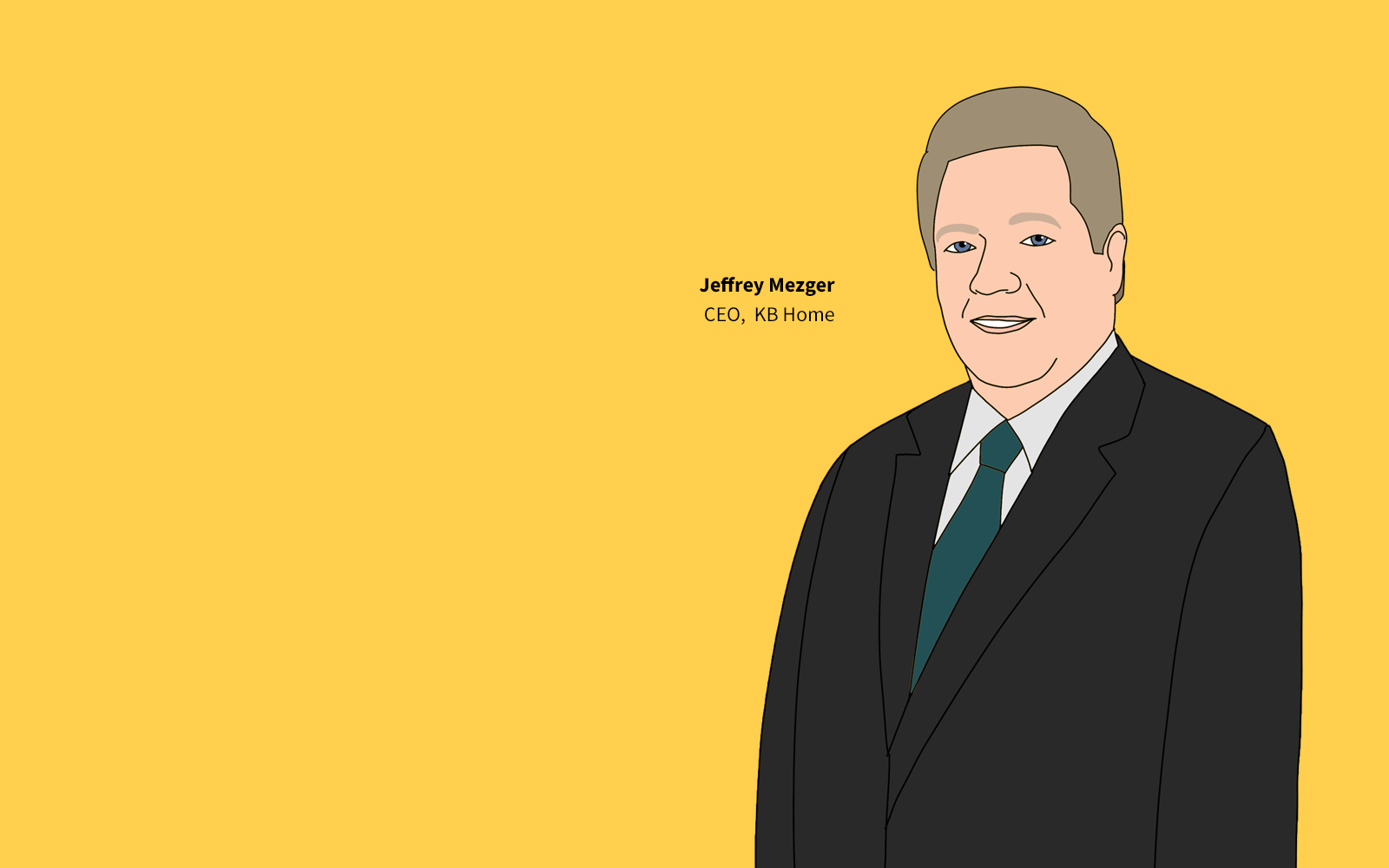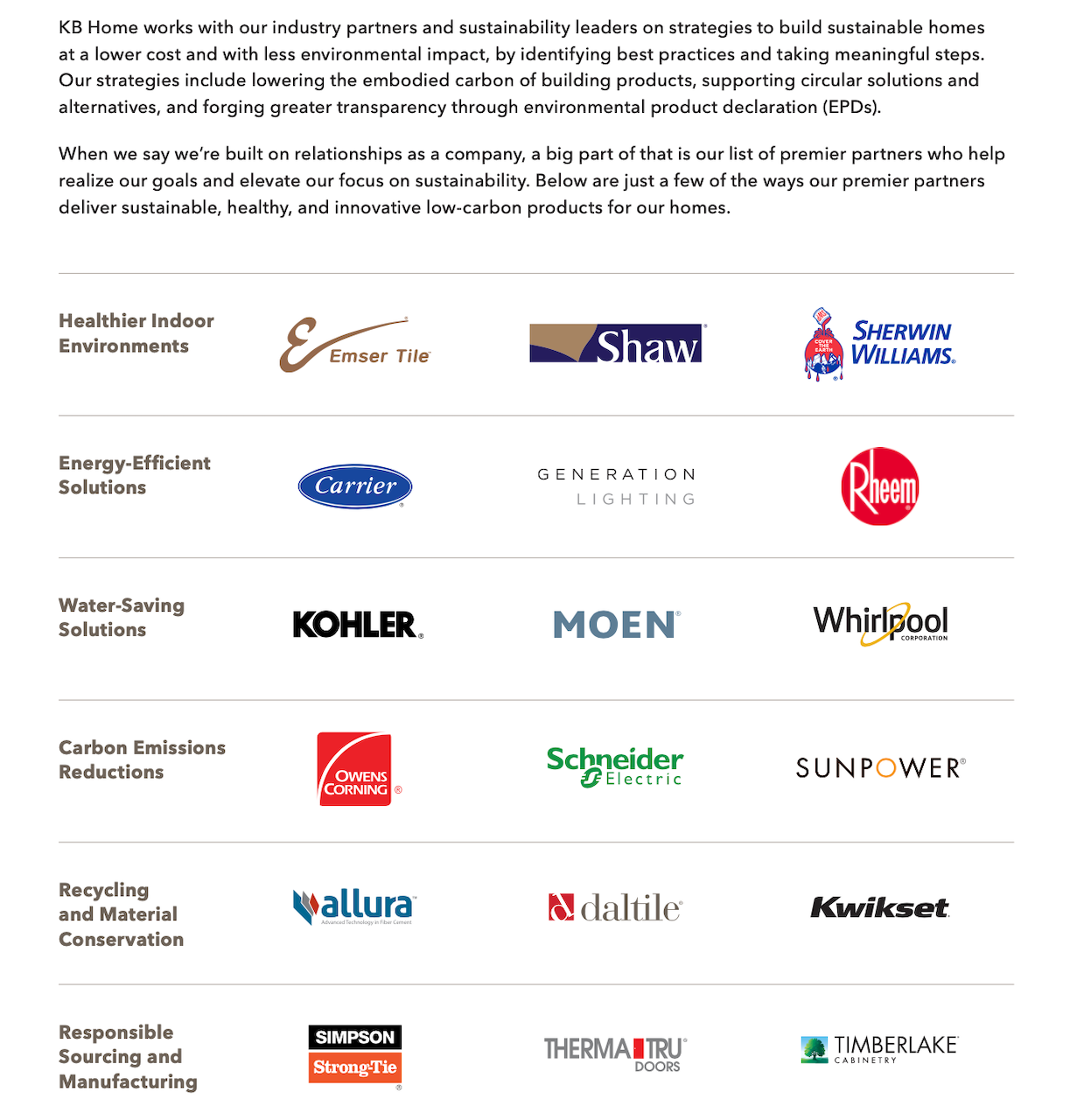Leadership
To Align Short-Run With Long-Term Goals, Partners Add Balance
KB Home serves as a use case, for aligning financial "fast results" with monitored and measured "long-term" improvements that run true to the firm's core values, mission, and purpose.

During even the harshest housing downturns, new homebuilding companies spring up, strong players gain market share, and long talked about "let's try something new" ideas often get a trial run. Face it, when the chips are down is when some of the best work ever done in homebuilding – for customers, for sources of finance, for communities, and for the sector itself – happens.
Some of this owes to wisdom, striving, experience, who each individual and every team are, and what they're made of. But not all of it.
In the face of 2022's specific array of challenges, a fund of acquired wisdom, time-tested relationships, canny opportunism, and lots of practice most of homebuilding's sprawling collective of 5,000 or more business leadership teams count as their experience with adversity will stand them in good stead for what lies ahead.
What they may need to draw on as well that doesn't already exist in that deep pool of experience includes what they still need to learn – an equally important capability in light of the future's already material impacts on consumer behaviors, employee associates' engagement, Mother Nature's bigger and more costly list of risks and demands, empowering technologies, and the in-and-outflow of capital.
Business leaders – like epic heroes – don't necessarily get to pick and choose what their skills and knowledge and ideas will come up against. Homebuilders and their partners especially, given the front-loaded capital intense lifecycle, can find themselves facing daunting challenges that seem for all the world to oppose one another. Choosing to solve either one appears to release the full fury of the other.
Going back to Greek epic poet Homer's The Odyssey, the story's hero Odysseus was traveling back homeward from Troy.
Odysseus was faced with a narrow channel with dangers on both sides, He chose to sail close to Scylla, a monstress sea goddess who lived under a large rock, instead of Charybdis, another sea monster who lived under a small rock. By sailing close to Scylla he lost six of his companions but if he had sailed close to Charybdis all would have been lost.
In short, finding himself between a rock and a hard place, Odysseus chose the lesser of two evils.
Our notion of "being between a rock and a hard place," traces its roots to Homer. A "narrow channel" for homebuilders and their partners looms as part of today's challenge to learn perhaps more than they currently know.
The rock and the hard place now has a fancy Investopedia term for it:
Intertemporal bind"
The bind puts homebuilding organization leaders – whether they're public company ceos or privately held companies that have earned reputations as contributor to local or regional economics, opportunity, culture, etc. – into position of having to make tough choices.
Harvard Business Review contributors Mark DesJardine of Dartmouth and Wei Shi of the University of Miami write about a "rock and a hard place" dilemma builders face here:
Steadily rising societal expectations are pushing companies to put their stakeholders first, and shareholders second — but some shareholders are not having it. Companies that don’t comply with the stakeholder capitalism agenda are quickly sanctioned by consumer groups and the media; and CEOs who fall short can become instant pariahs. As a result, companies are quick to boast their “corporate purpose” and returns they expect from their newly designed stakeholder-centered strategies while neglecting that many shareholders still focus on firms’ near-term stock returns. When those stakeholder-centered initiatives come up short in translating into expected stock price improvements, management can lose support from shareholders on which activists are waiting to capitalize.
The bind becomes intertemporal when the rock of having to produce fast results comes up against the hard place of having to secure long-term sustainable growth and profitability opportunity.
Aligning short-term financial performance – particularly in a down-cycle – with pillars of long-term purpose and mission is no mean feat, and never is.
The big take-away in the HBR piece by professors DesJardines and Shi – and it means as much for every homebuilder large, medium, and small in size and irrespective of capital stack – is that when it comes to being between a rock and a hard place, trying to go-it-alone is asking for trouble. Strategically extending the net to "stewards" who believe in the mission, purpose, vision, and long-term strategy can reduce that risk.
Those deep strategic partnerships – and the power to protect a long-term strategy – don't end traditionally defined shareholders.
For instance, KB Home – from its Day One origin story 65-plus years ago to the present moment, a mission-and-purpose-statement-incarnate illustrating a company capable of innovating building technology and processes to bridge homes and communities people aspire to with what they can attainably access – serves as a use case, for aligning "fast results" with monitored and measured "long-term" improvements.
Crucial to KB Home's capability in developing and sustaining a balance between shareholders and stakeholders is the leadership team's map of the firm itself as a learning, discovery, and excellence center that invites its partners deeply into its business, operations, design, and construction solutions.
A long-term ambition KB Home asserts it's committed to – consistent with the firm's Day One mission to innovate to make new homes and communities attainable so that buyer-residents of those homes could flourish – includes "taking steps to decarbonize our operations and products."
Recognizing that its big goal – to bridge people's aspirations with access to homes and neighborhoods that empower them and their children to prosper – requires up to 20,000 separate parts, 700 SKUs, 25 separate construction trades, countless intermediaries, etc., KB's strategic leaders have opted to extend its net of strategic "stewards." Epic partnerships coded into product and solutions design, engineering, and construction give the KB Home build-cycle new ways to solve for, assemble, install, and finish both structure and systems.
Spotlighted in KB Home's 15th annual Sustainability Report – which now includes the firm's integrated environment, social, and governance commitments, investments, and self-monitored progress points – chairman, president and ceo Jeffrey Mezger makes special note of how KB is not "going it alone."
As we have over the past 15 years — even in the midst of a continuing pandemic — we plan to progressively incorporate high-efficiency, cost- effective technologies into our homes. We cannot do this alone; we are leveraging our long-term, collaborative relationships with our suppliers to help design and adopt emerging innovations. We are also taking an equally important step in our sustainability evolution: acting as a catalyst within our value chain to minimize embodied carbon in the materials used to construct our homes."
Further, KB goes so far as to highlight some of the partners it has engaged in pursuit of balancing its short-run needs to achieve financial performance with its "forever" need to do the right thing by its customers, their children, and their children's children.

For several years, we had the honor of an invitation to participate with KB Home's Jacob Atalla, vp, innovation and sustainability, and Dan Bridleman, senior vp, sustainability, technology, and strategic sourcing, as they assembled engineers, product and systems design teams, technologies, architects, and construction teams from these firms. What came out of those learning and discovery processes – which also included partners at Southern California Edison, the Department of Energy, and National Renewable Energy Laboratory – were solutions designed for interoperability, for optimization, and for liveability never before brought to reality by a high-volume production builder.
The navigable but delicate balance – between a rock and the hard place and within the intertemporal bind that puts short term interests at odds with long-term mission, purpose, and sustainable profitability – is one of the exciting parts of what happens among homebuilders and their partners when the chips are down.
Join the conversation
MORE IN Leadership
10 Bold Ideas Tackling Housing Affordability And Access Now
From AI to hempcrete, these 10 ideas show how innovation in design, finance, and policy can open the door to housing affordability.
Sumitomo Forestry Sharpens U.S. Focus With DRB Move
Strategic clarity replaces portfolio sprawl as Sumitomo bets big on U.S. scale and integration.
Homebuilders and Insurance: A New-Reality Cost To Stay Ahead
Exclusive insights from Westwood Insurance Agency’s Alan Umaly and MSI’s Naimish Patel reveal why homebuilders must rethink insurance, resilience, and risk management—or risk losing buyers in an increasingly volatile market.
